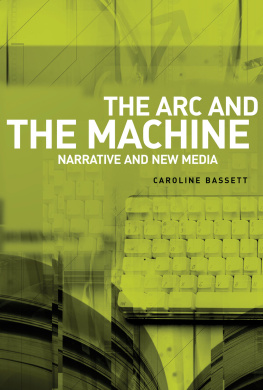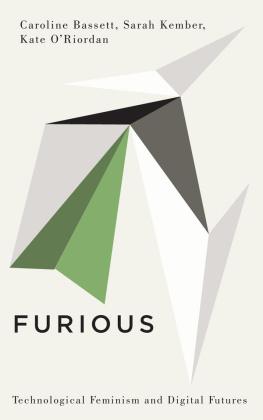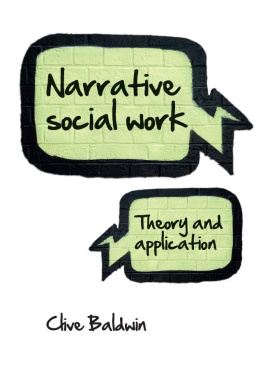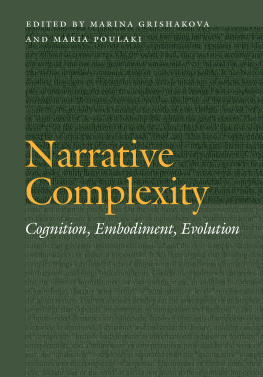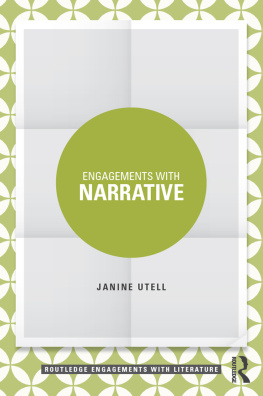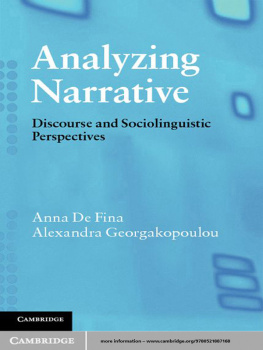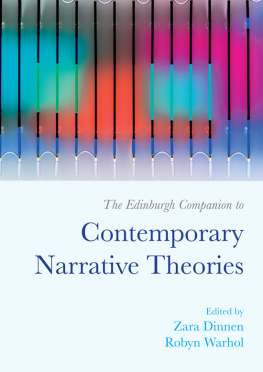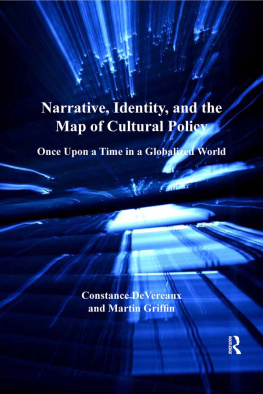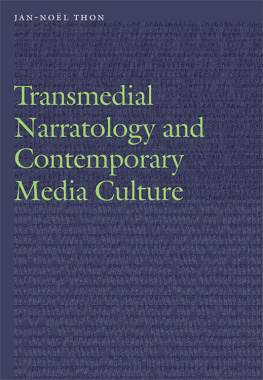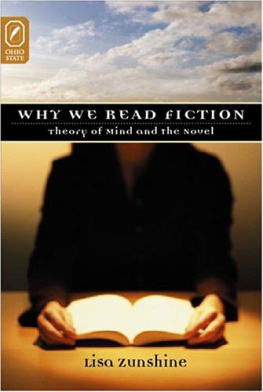Copyright Caroline Bassett 2007
The right of Caroline Bassett to be identified as the author of this work has been asserted by her in accordance with the Copyright, Designs and Patents Act 1988.
Published by Manchester University Press
Oxford Road, Manchester M13 9NR, UK
and Room 400, 175 Fifth Avenue, New York, NY 10010, USA
www.manchesteruniversitypress.co.uk
Distributed exclusively in the USA by
Palgrave, 175 Fifth Avenue, New York,
NY 10010, USA
Distributed exclusively in Canada by
UBC Press, University of British Columbia, 2029 West Mall,
Vancouver, BC, Canada V6T 1Z2
British Library Cataloguing-in-Publication Data
A catalogue record for this book is available from the
British Library
Library of Congress Cataloging-in-Publication Data applied for
ISBN 978-0-7190-7342-7
First published 2007
16 15 14 13 12 11 10 09 08 07 10 9 8 7 6 5 4 3 2 1
Typeset
by Florence Production Ltd, Stoodleigh, Devon
Printed in Great Britain
by The Cromwell Press Ltd, Trowbridge
Acknowledgements
Many people offered advice, support and friendship during the writing of this book. As is usual in these cases, none of them are to blame.
Thanks go to current and past colleagues at the University of Sussex including Roger Silverstone, Mandy Merck, Alan Cawson, Kate Lacey, Michael Bull, Mary-Agnes Krell, Jenny Alexander, Thomas Austin, Lizzie Thynne, Mel Friend, Dolores Tierney, Andy Medhurst, Janice Winship, Wilma de Jong, Lee Gooding and Sue Thornham. Gratitude is also due to my D.Phil. students: Id especially like to mention Dave Berry, Giota Alevizou and Alison Bambridge, thanks to them for many energetic discussions and arguments. Thanks to Jane Bassett and Kate ORiordan for reading drafts early and late, to Julie Doyle and Irmi Karl for reading chapters (and for elephant jokes), to Ben Morgan for coffee, and to Joanne Hurley, Chris Wilbert and Hilary Baker for many forms of collaboration, interaction, provocation, friendship and love.
Introduction
All you need is a different notebook, and the words will start flowing again. (Paul Auster, Oracle Night, 2003, 229)
New Engine, Same Soul. (Advertisement for a Macbook Pro, AppleStore, 2006)
Once, even recently, narrative was widely accepted as a dominant cultural logic and it did not seem controversial to suggest that lives, histories and cultures could be understood within its grounds. These days, in the first decade of the twenty-first century, global information systems of all kinds have come to pervade every aspect of life in the North and to redefine the terms of its inequality with the South, so that information systems cast a shadow there too, even as they are held out of the reach of many. And these days narratives centrality seems less certain.
Standing on the threshold of the age of mass communication Walter Benjamin argued that narrative could not survive the moment of information (Benjamin, 1992: 7389). Today these words may have a new resonance as they are rehearsed in relation to immeasurably complex information systems operating at scales at once grander and more intimate that Benjamin could ever have dreamed of.
Narrative has been understood as something that can encompass vast landscapes and single atoms, the life span of individuals and the rise and fall of empires, but its place looks less sure in a world where information is pervasive, so that more and more cultural forms and practices of more and more kinds can be included under its banner. In doing so they change their shape, take on another logic, become more or less significant, or fade away. The question is whether narrative can survive this remediation of the world through information.
At one level these doubts about the future of narrative cohere around specific cultural forms. Contemporary culture is marked by the database query, the fragment of talk, the evanescent shred of the news item exhausted in the moment of its delivery, the oscillating activity and stasis Game On or Game Over of the player. These cultural forms find their corollaries in what is characterized as an increasingly immaterial economy, which reorganizes work so that it is now experienced as a series of temporal and spatial discontinuities and ruptures, operating both at micro- and macro-levels: the call/hold of the phone call, the on/off of the job itself.
The forms of temporal resolution, and with them the forms of continuity, that narrative offers as it binds up experiences in time may seem inimical to these new cultural forms and practices. These gestures of automated labour and computerized leisure may seem too fast and too fragmented for meaning to take hold, and they may also seem to be understandable within their own horizons, to need no other form of interpretation.
Within this world-view the logic of information is offered in the place of the logic of the tale. Through this logic, it is said, we are constituted as individuals, through this logic we are said to act and speak, to be entertained, informed and controlled. Within this logic everyday life is conducted. Responding to the rise of information Jean-Franois Lyotard famously argued that the databases should be opened to the people; today many would argue that we have moved inside the machines, taken on board their mode of operation, aligned our sensory perception to their outputs. Perhaps even our desires have become machinic.
These arguments are seductive. For some the end of narrative, and with it the end of a particular form of interpretation, seems to usher in new possibilities: new forms of pleasure and sensation and indeed new forms of freedom. At the very least, what is lost, or so it is said, is a clinging to the past, an irrational refusal to consider the post-human future. The apocalyptic predictions of writers such as Paul Virilio, who fears that we lost the ontological grounds for narrative when we punctured the sheltering horizon of the sky with space travel on the one hand and with virtual space on the other, also have a stark glamour and are certainly performed with mordant brio (Virilio, 1997). Finally the systematic and rigorous arguments of thinkers such as Lev Manovich, working around particular cultural forms, have a real allure; and if this is in part because they offer brand new theoretical frameworks to match brand new machines, it is also because they grapple with the remediation of existing cultural forms in penetrating ways. Whatever position on narrative is to be taken, it is undoubtedly the case that databases, archives, algorithms, the visible forms of information, are crucial elements of contemporary cultural forms and practices. The case against narrative seems to be made.
The Arc and the Machine refuses to be seduced. This book comes to the defence of narrative, arguing that it is a vital element of contemporary culture, lying at the heart of the processes through which humans make sense of their experiences in everyday lives that are, by virtue of their mediation through and across information, increasingly multi-layered and complex both temporally and spatially. Narrative, understood as an extensive arc constituted by a process of emplotment that both reaches back into the horizon of the event and forwards into the horizon of the reader, can make sense of these experiences through a form of assembly that is not retrospective but in process, not necessarily linear but rather expansive, and that is certainly open and indeed

